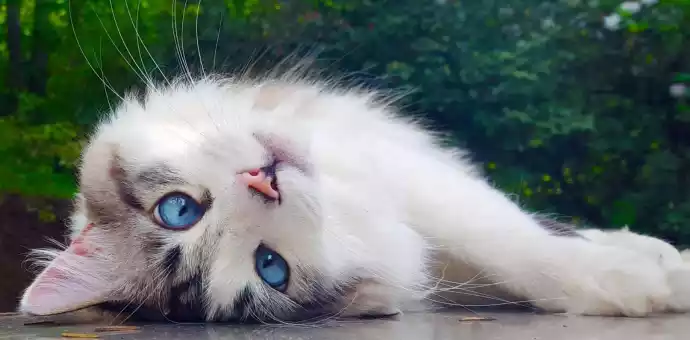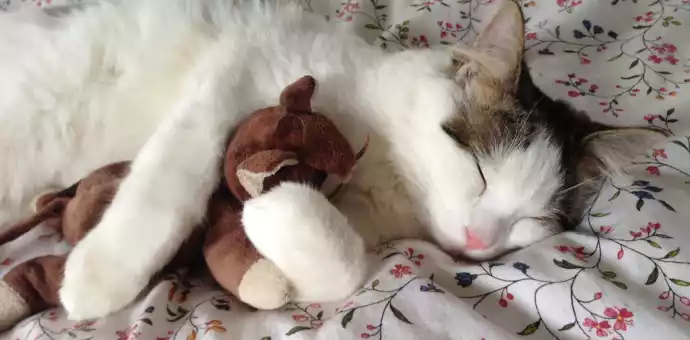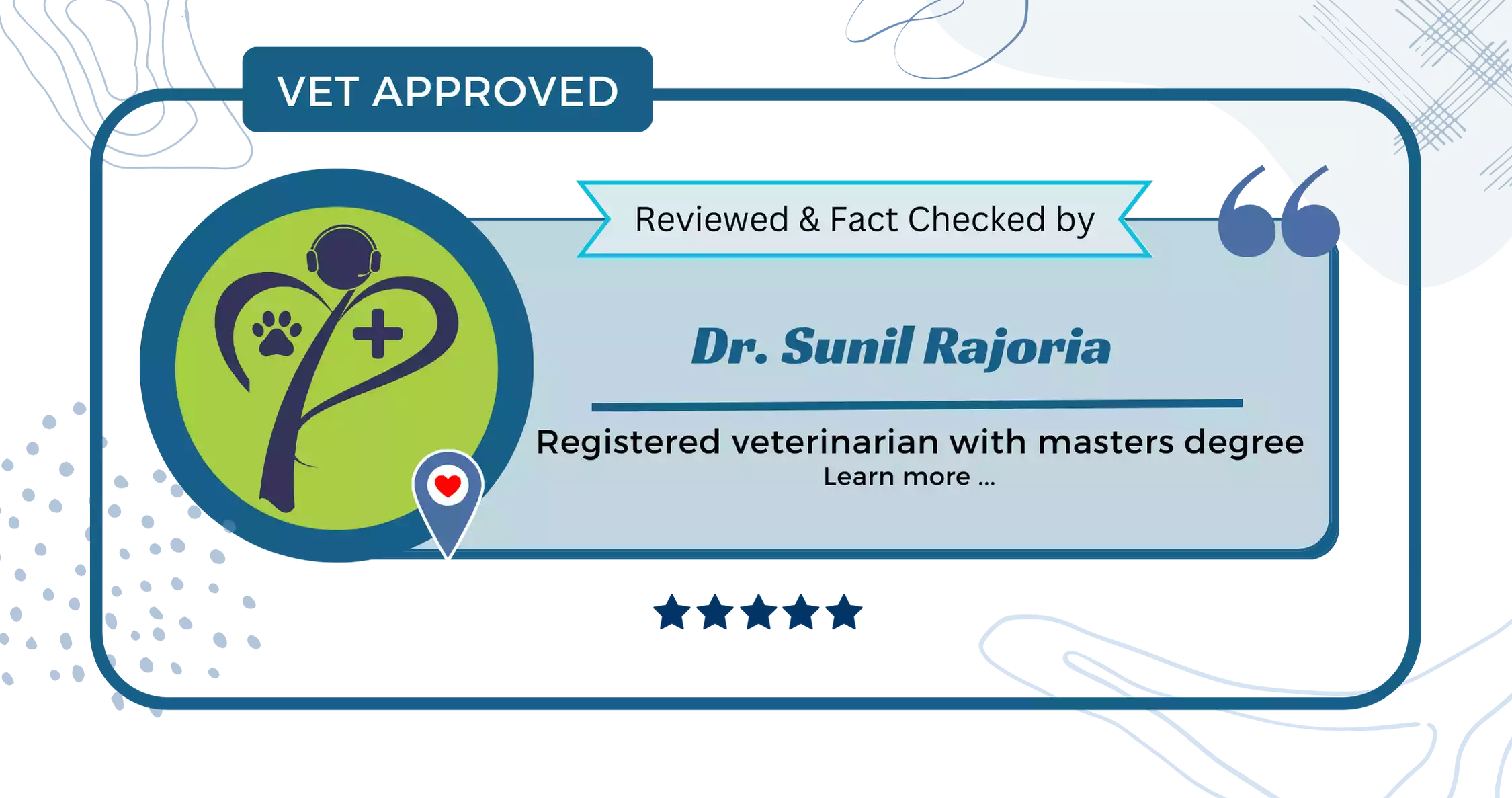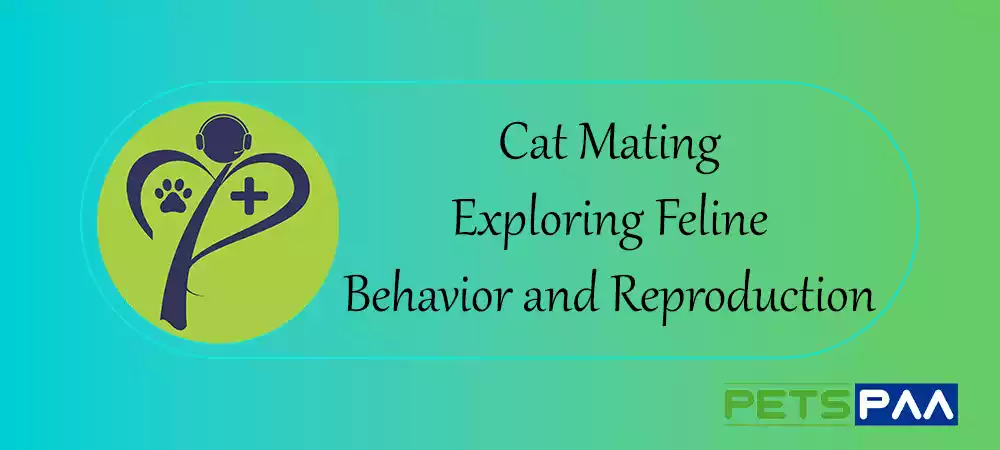Kidney disease in cats when to euthanize is a tough decision for any cat owner, but it may be sought for a cat with chronic kidney disease. PetsPaa offers a comprehensive guide to assist pet owners in determining when euthanasia may be the best decision for their cats.
Table of Contents
Introduction
As Team PetsPaa, we want to keep our pet parents tension-free by managing their pets happily and healthily. However, chronic conditions such as kidney disease can make it challenging. Such conditions are hurdles in our aim to give our pets the quality of life they deserve.
So, we have written this article to combat the problem of our responsible pet owners regarding kidney disease in cats when to euthanize. Our pet owners must know their pet’s A to Z options regarding the same.
The Importance of Discussing End-of-Life Decisions for Pets
We all want to keep our beloved pets happy and healthy for as long as possible. It is, nonetheless, critical to consider end-of-life options for pets suffering from chronic diseases such as Chronic Kidney Disease (CKD). Kidney Disease in Cats when to Euthanize is a tough decision but ensuring that our pets do not suffer unnecessarily is necessary.
Brief Overview of the Article Content
This article will give pet owners a complete guide to understanding kidney disease in cats when to euthanize. We will cover these topics in the article listed below:
- Signs of CKD in cats
- Evaluating your cat’s quality of life (QoL)
- Life expectancy for cats with CKD
- Consider kidney disease in cats when to euthanize
- Preparing for the euthanasia procedure
Understanding Kidney Disease in Cats
Understanding a cat’s health status is essential for giving the best care possible. Kidney disease is one of cats’ most prevalent health problems, especially CKD.
Classification of Kidney Disease
There are two forms of kidney disease in cats:
- Acute Kidney Disease (AKD): Acute kidney disease is usually triggered by a severe accident or sickness, and its symptoms manifest fast.
- Chronic Kidney Disease (CKD): CKD develops slowly over time and can be caused by several factors, including genetics, age, and food.

Comparison of Kidney Disease Types
All forms of kidney disease can cause serious health concerns in cats. In acute and chronic kidney disease, some fundamental differences are present.
Chronic kidney disease is a long-term condition that cannot be treated and is mainly seen in older cats. Still, acute kidney disease is frequently curable and reversible and can develop at any age.
Definition of Chronic Kidney Disease (CKD) in Cats
Chronic kidney disease (CKD) is a progressive disease that restricts the kidney’s ability to filter waste products and excess fluids from circulation, resulting in a buildup of toxins in the body.
Or in simple words, it is the gradual loss of kidney function over time. It is also known as chronic renal failure (CRF), which affects many cats, especially as they age.
Symptoms of Chronic Kidney Disease in Cats
Below some of the symptoms of chronic kidney disease are listed; if left untreated, CKD can lead to significant health issues and even death.
- Increased thirst and urination
- Lack of appetite
- Weight loss
- Lethargy
- Vomiting, and
- Diarrhoea
Cause of Chronic Kidney Disease in Cats
CKD leads to the accumulation of toxins in the cat’s body, causing various symptoms. Some of the most common causes of CKD in cats include:
- Age
- Infections
- Cancer
- Dehydration
- Toxins such as lilies and antifreeze
- Genetics abnormalities
- Immunologic diseases
- Lack of blood supply to the kidneys
- Certain medical conditions: high blood pressure and diabetes
Stages of CKD and their Symptoms
The International Renal Interest Society (IRIS) has developed a staging system for CKD in cats based on laboratory data and clinical signs. Here are the stages of CKD in cats and their associated symptoms:
Stage 1: The kidneys are beginning to show indications of impairment and damage at this stage, but cats may not show any symptoms.
Stage 2: In this stage, cats may start to show mild symptoms such as increased thirst and urination, decreased appetite, and weight loss.
Stage 3: In this stage, cats may show more significant symptoms such as vomiting, diarrhoea, dehydration, lethargy, and poor coat condition.
Stage 4: In this stage, cats may have severe kidney damage and symptoms may become more severe, including anorexia, dehydration, oral ulcers, weight loss and weakness.
Chronic Kidney Disease (CKD) symptoms in cats vary and are not typically specific to kidney disease, making early identification difficult. As a result, frequent veterinarian inspections, blood testing, and urine tests are critical for recognizing CKD in cats as early as possible.

Diagnosis and Treatment Options
CKD in cats is normally diagnosed using a combination of blood testing, urine tests, and physical exams.
Once a diagnosis is made, treatment options may include dietary adjustments, medication, fluid therapy, and, in rare circumstances, surgery.
The International Renal Interest Society (IRIS) has created a staging system that can help identify treatment choices and prognosis for each stage of the disease.
IRIS Staging System
The IRIS staging system is a helpful tool for both veterinarians and cat owners to identify the severity of CKD and the best treatment choices. It employs a mix of blood and urine tests to categorize the disease into four phases, as discussed before in this article.
Evaluating Your QoL When Kidney Disease in Cats when to Euthanize
Determination to euthanize a cat with kidney disease may be one of the most challenging, painful and complex decisions. Evaluating your cat’s quality of life (QoL) is crucial before making this decision.
Importance of Evaluating Quality of Life (QoL)
When a cat has chronic kidney disease, measuring their quality of life is critical. This provides the cat with a happy life free of pain and suffering. Evaluating the cat’s quality of life can help you to choose the best option for the cat.
Factors to Consider
There are various elements to consider when measuring a cat’s quality of life, some of which are:
- Mobility: Cats with kidney disease may have difficulties moving around, impacting their quality of life.
- Appetite: Loss of appetite is typical in cats with kidney disease. It is critical to assess how well your cat is eating.
- Hygiene: Cats with kidney disease may have trouble grooming themselves, resulting in hygiene difficulties.
- Pain Management: Chronic pain is a frequent indication of kidney disease. It is critical to assess how effectively your cat is managing their pain.
- Overall Happiness: It’s critical to assess how happy your cat is. A happy cat is alert, lively, and interested in its environment.
Guidelines for Evaluating Quality of Life
There are several guidelines for evaluating the quality of life (QoL) in cats suffering from chronic kidney disease (CKD). Here are some of the critical factors to consider when evaluating a cat’s QoL:
- Keep a diary: Keep track of your cat’s everyday activities, such as feeding, drinking and moving.
- Consult with your veterinarian: Your veterinarian can help you assess your cat’s quality of life and discuss alternatives.
- Use Diagnostic tools: Various online tools, such as RenalTech, may help you diagnose a disease. Some other applications or tools employ a scoring system allowing you to monitor your cat’s progress.
- Monitor clinical signs of CKD, such as vomiting, diarrhea, dehydration, lethargy, and changes in appetite and weight. Proper management of these symptoms can improve a cat’s QoL.
- Evaluate behavioral changes, such as hiding, aggression, or vocalization, indicating pain, discomfort, or stress. Addressing these changes can help improve the cat’s QoL.
- Observe social behavior changes, such as reduced interaction with humans or other pets, which can indicate a decrease in QoL. Providing opportunities for socialization and interaction can improve the cat’s QoL.
- Ensure the cat’s environment is safe, comfortable, and stimulating, as the environment can significantly impact their QoL.
- Monitor the cat’s response to treatment and adjust the treatment plan as necessary to improve the cat’s QoL.

Life Expectancy in Cats with CKD
When a cat is diagnosed with chronic kidney disease (CKD), one of the most common questions a pet owner may have is how long their beloved friend will survive. While there is no conclusive answer, various factors might alter a cat’s life expectancy with CKD.
Factors Influencing Life Expectancy
The following factors can affect how long a cat with CKD lives:
- Age at diagnosis: Cats diagnosed with CKD at a younger age have a greater life expectancy than those diagnosed later in life.
- The disease’s severity: The higher the IRIS stage of CKD, the lower the life expectancy.
- Co-existing medical issues: Cats with various medical disorders, such as hypertension, anemia or urinary tract infections, may have a lower life expectancy.
- Response to Treatment: Cats that react well to treatment in the early stages of the disease, may have a longer life expectancy.
- Nutrition: Appropriate nutrition, including a low-protein diet, can help manage CKD symptoms and improve a cat’s prognosis.
- Compliance with treatment: Consistent administration of prescribed medications and treatments can improve a cat’s prognosis and quality of life.
- Overall health and well-being of a cat, including physical, psychological and social variables might influence prognosis and life expectancy.
Treatment Options and Effectiveness
There are various treatment options available for cats with CKD, including:
- Prescription diets: Specialized meals can help control symptoms and decrease the course of the disease.
- Medications: Specific medicines can be used to treat high blood pressure, anemia, and other CKD problems.
- Subcutaneous fluids: Fluid treatment can assist control dehydration and improve overall hydration status.
- Kidney transplantation: In rare situations, kidney transplantation may be a possibility for cats with CKD.
While there is no cure for CKD, early detection and treatment can help slow the course of the disease and improve a cat’s quality of life. However, treatment efficacy varies based on the individual cat and stage of CKD.
The IRIS Staging System and Its Relationship to Life Expectancy
The International Renal Interest Society (IRIS) has created a CKD staging system based on the cat’s creatinine level, urine protein level, and blood pressure. The IRIS staging system can assist in forecasting a cat’s life expectancy and guide treatment recommendations. According to the IRIS staging method, the four phases of CKD are as follows:
- Stage 1: Acute kidney disease with no clinical signs.
- Stage 2: Mild kidney disease with few clinical signs
- Stage 3: Moderate kidney disease with moderate clinical signs
- Stage 4: significant kidney disease with significant clinical signs
Cats diagnosed with CKD earlier have a greater life expectancy than those diagnosed later. A cat diagnosed with stage 1 CKD may survive for several years, but the stage 4 CKD suffered cat may only live for a few months.

Consider kidney disease in cats when to euthanize
Dealing with chronic kidney disease in cats and the decision for kidney disease in cats when to euthanize may be difficult and stressful for pet owners. Although various treatment options are available, the condition might worsen when euthanasia becomes essential.
Signs that it may be time to contemplate euthanasia
When a cat’s quality of life decreases due to CKD, owners may consider kidney disease in cats when to euthanize. Some warning indicators to check for are:
- Significant weight loss and loss of appetite
- Lethargy and reduced mobility
- Difficulty breathing or extreme lethargy
- The inability to move or stand without assistance
- Incontinence and disinterest in grooming
- CKD symptoms worsening despite treatment
- refusal to take drugs or comply with treatment
- Incontinence or loss of control over bladder or bowel function
- Signs of confusion, disorientation, or unresponsiveness
- Terminal or incurable illness with an inferior prognosis.
- Persistent pain or discomfort that cannot be effectively managed with medical treatment
- Chronic, severe vomiting or diarrhea that leads to dehydration and malnutrition
- A poor or declining quality of life, with an inability to engage in previously enjoyed activities or interact with family members
Importance of seeking advice from a veterinarian
It is critical to discuss end-of-life care options with a veterinarian, who can give an impartial assessment of your cat’s health and recommendations on kidney disease in cats when to euthanize. They can also assist you in comprehending the euthanasia procedure and address any concerns or questions.
Preparing for the euthanasia procedure
The decision of kidney disease in cats when to euthanize is never easy. Still, planning can help alleviate some of the stress and pain. Consider the following:
- Choosing a place for the procedure (e.g., at home or at a veterinary clinic)
- Choosing who will be present throughout the operation
- Discussing aftercare options with your veterinarian
- Taking the time to say goodbye and provide a quiet and comfortable atmosphere for your cat’s final hours.

Conclusion
In conclusion, chronic kidney disease is a prevalent health concern in cats. Pet owners must know the disease’s varied stages, signs, symptoms, and treatment. When assessing the quality of life of their cats, owners should consider mobility, appetite, cleanliness, pain management and overall essential things.
While the life expectancy of cats with CKD varies based on numerous circumstances, it is critical to contemplate euthanasia when the pet’s suffering becomes unbearable. Seeking assistance from a veterinarian and preparing for the euthanasia procedure can make the experience less distressing for both the pet and the owner.
Making end-of-life decisions for kidney disease in cats when to euthanize is never easy. Still, pet owners must ensure that they make the most significant decision for their furry pets. Seeking assistance from family, friends, or a support group can help lessen the stress and sadness connected with decision-making.
FAQs (Frequently Asked Questions)
Kidney failure in cats can be a painful condition caused by waste products and toxins accumulating in the circulation. Symptoms such as vomiting, diarrhea, weakness, lack of appetite, restlessness, fatigue, and weight loss can be distressing.
Chronic kidney disease (CKD) in cats is divided into four stages:
- stage 1 (early signs of kidney disease);
- stage 2 (mild kidney damage);
- stage 3 (moderate kidney damage and signs of illness);
- stage 4 (severe kidney damage and significant decline in kidney function).
Consult a veterinarian if you believe your cat has CKD for accurate diagnosis and treatment.
Special kidney-friendly diet: Giving your cat a diet low in protein and phosphorus can slow the disease’s advancement and enhance its quality of life.
Provide plenty of water: managing chronic kidney disease in your cat requires motivating them to drink abundant water. Your vet might suggest subcutaneous fluid therapy in some circumstances.
Medications: some medications used for controlling high blood pressure, anemia, and nausea could help manage CKD symptoms.
Regular Vet check-ups: Regular checking in with your veterinarian is critical for monitoring your cat’s kidney function and altering their treatment plan.
Providing a quiet and comfortable environment: Ensuring a quiet and comfortable environment with a clean litter box and providing good love and attention can improve their quality of life through a peaceful environment.
Yes, if we talk about the worst and most severe cases, it is good to go for euthanize a cat, but euthanasia for cats with kidney failure should be considered on a case-by-case basis. Before deciding what kidney disease in cats when to euthanize, please evaluate the stages of CKD and their symptoms or consult your veterinarian.







